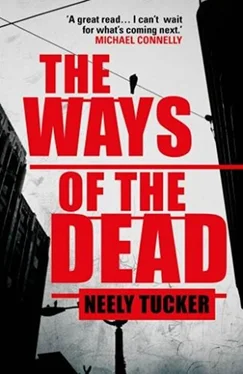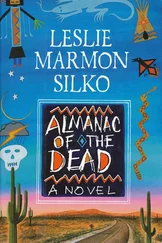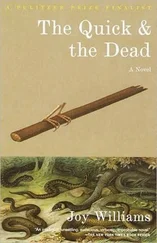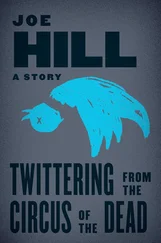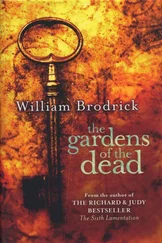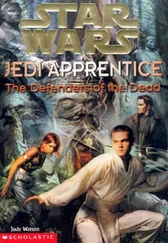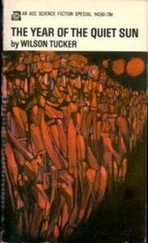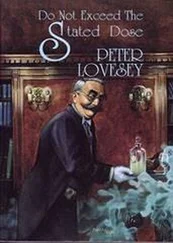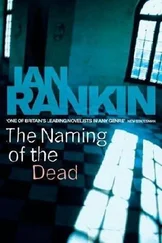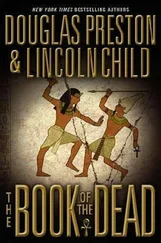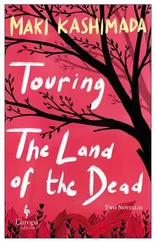But the main feature of his space was the hand-sketched homicide map of the city, his pride and possibly his joy. It was a poster-sized grid, thirty-six inches wide and fifty inches tall, marked off by the seven police districts with a few major roads indicated, and it was his oracle of Washington. It was his manner of understanding the living, by studying the ways of the dead, a habit so natural to him after years of covering war and conflict that it was no longer a conscious thought. If you wanted to understand any animal, he would tell college classes when they asked him to give talks, then you have to understand the behavior that made them unique, and what made human beings unique among animals were the prefrontal cortex, the opposing thumb, the well-developed voice box, and the propensity to torture and kill other members of their species. When students sometimes objected to this as morbid, or sought to invoke deities and religious perspectives, he would say that he had yet to see evidence of deity, but any textbook offered three thousand years or so of recorded history to back up his thoughts on humanity.
“Even if you believe the Bible is literally true,” he would say, “when the population of the planet was four, Cain killed Abel, reducing it to three. Homicide is not an aberration. It is the norm. It is part of who we are.”
On his map, each killing of the current year was marked with a pushpin, a tiny cross, and a number. The pins were color coded to the race of the victim. The crosses denoted case status: black for closed, red for open. The tiny numbers taped to the pins denoted the chronological order of the killings in each year. These numbers correlated to a database Sully kept that had the victim’s name, date of the crime, suspects (if any), relatives’ names (if any), and the name of the lead detective. Each killing then had a manila folder of its own, complete with photographs of the crime scene, the victim, the killer, and so on.
A half dozen years earlier, at the height of the crack cocaine epidemic, there would have been more than four hundred crosses each year. There were about two hundred so far this year, nearly all of them clustered in the city’s poorest quadrants: east of the Anacostia, then a spine up through the neighborhoods of eastern Capitol Hill, Trinidad, and on into Brookland. The most violent housing projects-Benning Terrace, Barry Farms, Potomac Gardens, Sursum Corda-were a thick red smear of crosses.
Rock Creek Park, its eastern edge reaching as far as Sixteenth Street, split the city, both in geography and homicide. Nearly all the slayings were to the east and south. West of the park-west of the park’s jogging trails and rising hills and tumbling streams-the city got wealthy and mostly white, and the few red murder crosses there appeared as droplets of blood.
He was looking for a pin and a red cross for Sarah.
“Sullivan, God, I’m glad to see you,” a voice called out, startling him. Melissa Baird, the Metro editor, was smiling, closing on him like a fast hawk on a slow rabbit. “R.J. tells me you’ve got a beautiful piece on this neighborhood, just really beautiful.”
She was wearing her shoulder-length brown hair pulled back in a ponytail, and her pressed jeans and an open-collared shirt-her idea of a casual Saturday-had an air that all but screamed Master’s in Fucking Journalism from Columbia, born on third base in Westchester. Social climber, vertical blur at a paper that idolized the Ivy League and East Coast wankerdom. He swiveled in the chair, eyes darting to a clock posted on a beam behind her. It was nearly five. Front-page meeting starting in fifteen.
“Thank God you’ve got something so eloquent,” she was saying. “Nothing happened on the investigation, other than they’re still looking for those three guys in the store.” She came into his cubicle and made a slight hop to sit on the edge of the desk, her newsroom trademark. Legs crossed at the ankles, back straight, hands on the desk beside her.
“Hunter’s sources on cops zipped up tight,” she continued. Sully itched, wondering how long this would go on. Pert. She was just so damn pert . “The feds aren’t even returning calls. Reese family is sequestered at home in McLean. We’ll put the investigation story on the front page-we’ve got to, right?-but we’re looking pretty thin. Your piece is saving us. The art’s already in. Have you seen it? Early-morning mist in an alley, looking across Georgia at the store where the girl was murdered, a couple of storefronts, a guy in ragged pants and shirt walking across the street, stepping in a puddle. R.J. saw it and said it was just the kind of atmosphere you’ve got.”
“R.J. is a kind man.”
“He said something about Charles Bukowski poetry.”
Sully recognized the drill, and he recognized Melissa’s skill at it. She was pumping him up while letting him know the pressure she, and by extension he, was under. And, he recognized, without telling him what to write, she was telling him exactly what to write.
“Well, a piece like this,” he said, thinking of something to bullshit her with, “I think we just tell people what it feels like on the block down there. We tell them what the beer delivery guy is talking about while he’s loading up a dolly and what song is thumping out of a car stopped at the light. We tell them what the bathroom in the strip club just down the street smells like. We tell them about the elementary school, swing sets in the rain and needles in the playground grass from the Friday night junkies, and that the people who live here, the people in left-behind America, they, they’re the people least interested in the murder story that, you know, is horrifying the rest of the nation’s capital.”
Melissa, beaming, smiling, leaning back on the desk, holding up her hands. “Perfect! That’s just golden. Never mind a lead for the five o’clock, but go ahead and write in a public basket so we can peek in, okay? Helps the headline guys. Move a final by seven?”
Sully nodded, sure sure, yeah.
Melissa popped her hands together and got off the desk, starting to back away, pep talk done. “That bit about the people there being the least interested in the murder that’s fascinating the rest of the city? Perfect. But you can make it the rest of the country. Slow weekend. This thing is all over the networks, the cable channels. The Beeb just did eight minutes.”
She nodded, as if that were information he really needed right now, turned and walked away, everything but a spring in her step. He put his pen in his mouth and typed in a slug for the story-PRINCETONPLACE-and not twenty seconds later felt the bulbs of sweat start pushing through the pores in the small of his back, under his arms, on his palms. Why couldn’t you drink in the newsroom anymore? What was wrong with that?
***
Someone dumped the body of Sarah Emily Reese into a garbage dumpster less than 200 feet from the intersection of Georgia Avenue Northwest and Princeton Place NW in this scruffy corner of the District on Friday evening, a crime that has fascinated, if not horrified, the nation. But there were no memorials of teddy bears, flowers and hand-scrawled posters at the scene yesterday, the typical signs of neighborhood mourning in this part of the city.
Instead, neighbors and residents here may be the people in America least interested in the brutal slaying of the child of a prominent D.C. jurist in their midst. Neighborhood bars kept their televisions tuned to sports stations yesterday, not the blanket coverage of the killing carried by cable news channels. Pedestrians sidestepped the yellow police tape around Doyle’s Market and ducked into the Hunger Stopper restaurant for breakfasts of waffles and fried chicken. Speculation wasn’t on the menu. The Show Bar, a strip club two blocks from the murder scene, did a brisk afternoon trade in the regular bump and grind…
Читать дальше
